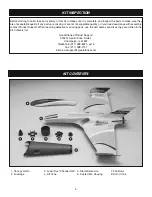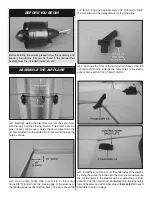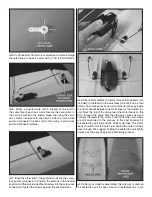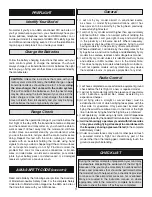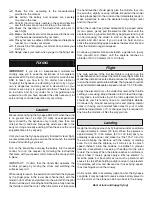
9
HOW TO CUT HOLES IN FOAM
❏
A. Using a brass or aluminum tube with a diameter of the
size hole you wish to make. Use a rotary tool with a cutoff
wheel to bevel a sharp edge onto one end of the tube. If you
do not have a rotary tool, a hobby knife can also be used to
carve the inside of the tube until the edge is sharp.
❏
B. Press the tube into the foam and twist. The sharp end
will cut a clean hole through the foam without tear out.
❏
14. Use the included hook and loop material to secure the
battery pack in the front of the radio compartment. Test fi t
the canopy hatch onto the plane and confi rm that it fi ts well.
If any of the electric components interfere with the hatch
seating properly, move the components or enlarge the inside
of the compartment or hatch as necessary until it fi ts well.
GET THE MODEL READY TO FLY
Check the Control Directions
❏
1. Turn on the transmitter and receiver and center the trims.
❏
2. With the transmitter and receiver still on, check all the
control surfaces to see if they are centered. If necessary,
adjust the pushrods by the knurled thumb screws in the
screw-lock pushrod connectors, repositioning the pushrods,
and re-tightening the thumb screws.
ELEVONS MOVE UP
RIGHT ELEVON MOVES UP
LEFT ELEVON MOVES DOWN
FULL THROTTLE
3-CHANNEL RADIO SETUP
(STANDARD MODE 2)
❏
3. Make certain that the control surfaces and the throttle
respond in the correct direction as shown in the diagram.
If any of the controls respond in the wrong direction, use
the servo reversing in the transmitter to reverse the servos
connected to those controls. Be certain the control surfaces
have remained centered. Adjust if necessary.
Set the Control Throws
Use a Great Planes AccuThrow (or a ruler) to accurately measure
and set the control throw of each control surface as indicated in
the chart that follows. If your radio does not have dual rates, we
recommend setting the throws at the
low
rate setting.





